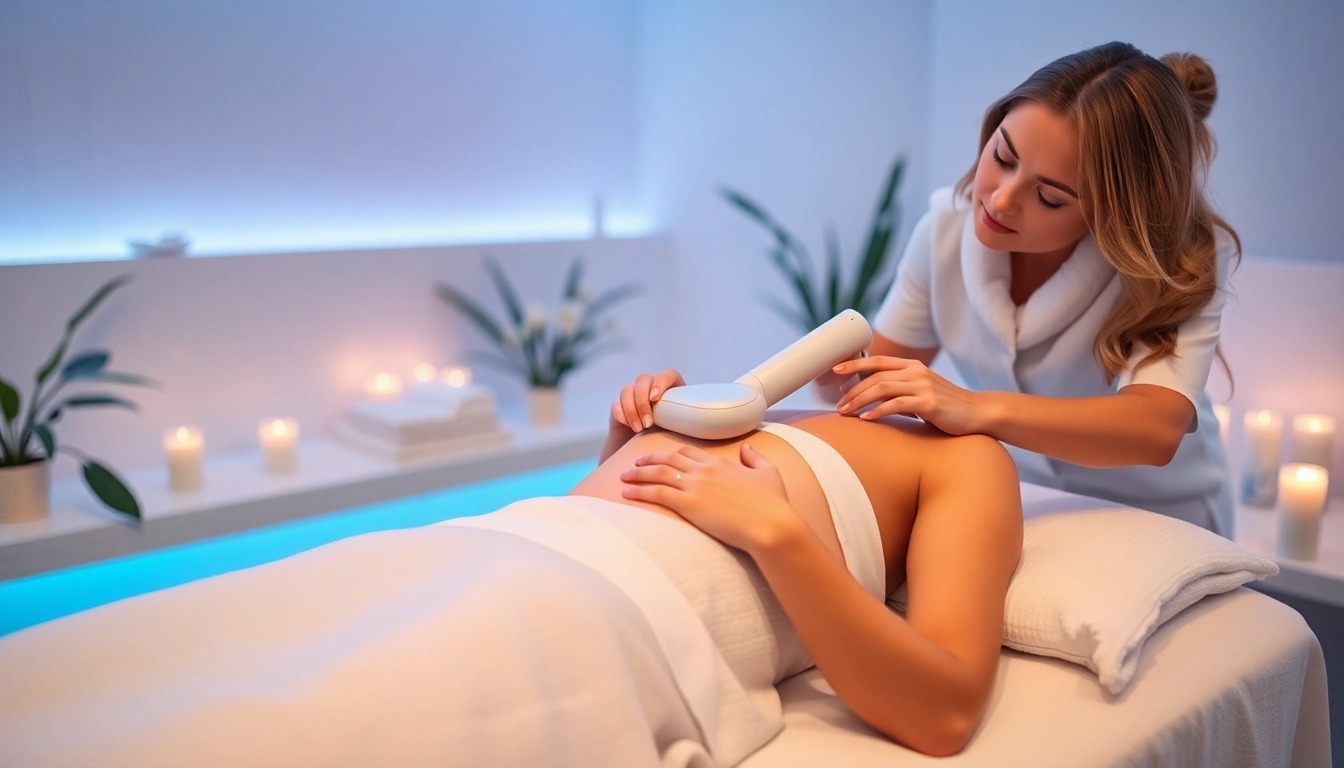Understanding Cellulite: Causes and Characteristics
What is Cellulite?
Cellulite is a term used to describe the dimpled appearance of the skin caused by fat deposits that push through the connective tissue beneath the skin. Often likened to the appearance of cottage cheese or orange peel, cellulite is a common cosmetic concern, affecting a significant percentage of women and some men as well. Contrary to popular belief, cellulite is not exclusively tied to obesity; it can occur in individuals with a normal weight as well. Understanding the nuances of cellulite is essential for individuals seeking effective cellulite therapy options.
Common Causes of Cellulite Formation
Cellulite is the result of multiple factors that contribute to its formation. Some of the most prevalent causes include:
- Genetics: Family history plays a significant role in determining the likelihood of developing cellulite, as inherited traits can influence fat distribution and skin structure.
- Hormonal Changes: Hormones such as estrogen can affect fat storage and circulation, leading to increased cellulite as individuals age.
- Diet: A diet high in fat, carbohydrates, and salt, along with low hydration levels, can contribute to the development of cellulite. Nutritional choices affect skin quality and overall body fat.
- Physical Activity: Lack of regular physical activity can lead to weight gain and a decrease in muscle tone under the skin, making cellulite more prominent.
- Age: As skin loses elasticity over time, cellulite becomes more visible, with aging skin also experiencing a reduction in collagen and elastin.
Types and Stages of Cellulite
Cellulite can generally be categorized into three stages based on its severity:
- Stage 1: The skin appears smooth when viewed from above, but upon pinching or applying pressure, the dimpled appearance can be felt.
- Stage 2: Dimpling becomes apparent while standing or sitting, indicating moderate fat deposits beneath the skin.
- Stage 3: Referring to severe cellulite, this stage features noticeable lumps and rough texture, with clear dimples present both in a standing and lying position.
Exploring Different Cellulite Therapy Options
Non-invasive Cellulite Treatment Methods
For those looking to minimize the appearance of cellulite without undergoing surgical procedures, non-invasive therapy options are plentiful:
- Laser Therapy: This method utilizes lasers for tissue remodeling and elasticity improvement. Laser treatments work to target the underlying layers of skin to reduce dimpling.
- Acoustic Wave Therapy: Sound waves are transmitted through the skin to break down the fibrous bands that pull down on the skin, thereby improving circulation and promoting smoother skin.
- Radiofrequency Therapy: By delivering heat deep into the skin layers, this treatment boosts collagen production and improves skin elasticity, while reducing the fat layer.
- Injection-based Treatments: Subcision and other injectable therapies aim to disrupt the connective bands beneath the skin to reduce tethering, providing a smoother appearance.
Surgical Approaches to Cellulite Reduction
For those seeking more immediate and dramatic results, surgical procedures may provide effective cellulite reduction:
- Cellfina: This minimally invasive procedure involves breaking up the bands of tissue causing cellulite through a needle-sized device, offering more permanent results with less downtime.
- Wellness Procedures: Techniques that combine liposuction with skin tightening can remove fat and improve skin texture, effectively reducing the visible signs of cellulite.
Home Remedies and Lifestyle Changes
In addition to professional treatments, there are practical home remedies and lifestyle modifications worth considering:
- Exercise Regularly: Engaging in strength training and aerobic exercise can help reduce overall body fat and improve muscle tone.
- Balanced Diet: Consuming a well-balanced diet rich in fruits, vegetables, lean proteins, and healthy fats can aid in maintaining a healthy weight and improving skin appearance.
- Staying Hydrated: Drinking plenty of water helps to flush toxins from the body and keep skin healthy, potentially reducing the visibility of cellulite.
- Massages: Regular massage can improve circulation and lymphatic drainage, which may help to reduce the appearance of cellulite over time.
How to Choose the Right Cellulite Therapy for You
Assessing Your Skin Type and Cellulite Severity
Choosing the right cellulite therapy begins with an honest assessment of your skin type and the severity of your cellulite. Individuals with more severe cases may want to consider surgical options, while those with mild cellulite might benefit from non-invasive treatments or lifestyle changes. Consulting with a dermatologist or certified professional can provide personalized recommendations tailored to your specific needs.
Consulting Professionals for Personalized Advice
Before deciding on a treatment, it’s advisable to consult with a healthcare provider or dermatologist who can evaluate your skin condition and medical history. Professional expertise can guide you toward the most suitable treatment based on individual factors like age, health, and personal preferences.
Setting Realistic Expectations
It is essential to set realistic expectations when pursuing cellulite therapy. Most treatments aim to improve the appearance of cellulite significantly but may not entirely eliminate it. Understanding what to expect from each treatment can prevent disappointment and foster a more positive mindset.
Benefits and Limitations of Popular Cellulite Therapies
Overview of Common Treatments and Their Efficacy
Different treatments for cellulite vary in their approach and effectiveness. For example, laser therapies offer improvement in skin texture and tightness, while acoustic wave therapy can enhance circulation and temporarily diminish the appearance of cellulite. Many patients report satisfactory results, but it is crucial to understand that ongoing treatments may be necessary for long-lasting outcomes.
Potential Side Effects to Consider
While most non-invasive treatments come with minimal side effects, individuals should be aware that some procedures might lead to temporary discomfort, swelling, or bruising. Surgical options may carry more significant risks, including infection or scarring. A consultation with a professional can provide insight into the risks associated with various treatments.
Long-Term Results and Maintenance of Treatments
Maintaining results from cellulite therapy often requires ongoing commitment. This may include maintaining a healthy lifestyle, scheduling regular treatments, and staying active. Experts suggest that individuals remain proactive in addressing their cellulite for sustained results.
Latest Innovations in Cellulite Therapy
Emerging Technologies in Cellulite Treatment
As technology advances, new types of cellulite treatments are emerging. For instance, newer laser systems aim for deeper penetration without harming the upper skin layers. Additionally, combination therapies, which incorporate various treatment modalities, are becoming increasingly popular, focusing on comprehensive solutions for cellulite.
Research and Trends in Aesthetic Medicine
Ongoing studies in aesthetic medicine continue to shed light on the complex nature of cellulite. Researchers are exploring how factors such as genetics, biology, and environmental influences interact to create the appearance of cellulite. This body of work may lead to the development of more targeted and effective treatments moving forward.
Future Directions in Cellulite Therapy Solutions
The future of cellulite therapy looks promising, with potential developments including regenerative medicine approaches that leverage stem cells and growth factors to enhance skin healing and fat metabolism. The integration of personalized medicine is also expected to play a critical role, focusing on individualized treatments designed around each patient’s unique skin biology.



